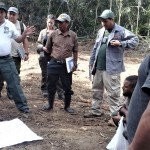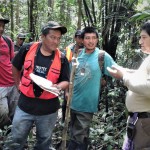SATIIM Launches FPIC Project
(Belmopan, Cayo District – February 15, 2024) – The Sarstoon Temash Institute for Indigenous Management and the European Union today launched a new project to standardize implementation of the country’s FPIC Protocol.
The new project, Building capacity for an inclusive, pragmatic national effort to scale up FPIC
in Belize, will engage Indigenous communities, government ministries, civil society organizations to develop standardized manuals, forms and procedures to ensure smooth, clear implementation of this government policy instituted since 2022.
This collaborative effort is being coordinated by SATIIM, an Indigenous NGO founded almost 30 years ago on the principle of free, prior and informed consent by five communities whose land was included, without their knowledge, in the Sarstoon Temash National Park. The project will enable the fulfilment of both the promise and obligations of the CCJ Consent Order, the 2007 Supreme Court ruling on Maya Land rights, and other international human rights conventions to which Belize is a signatory.
It will ultimately strengthen government, Indigenous, and CSO ability to implement the FPIC Protocol through a clear, standardized process
Since 2017, SATIIM has trained Indigenous communities in FPIC concepts. Under the last EU-supported project, Promoting and protecting the economic, social, and cultural rights of Maya women in Belize, SATIIM provided FPIC training to Maya women and submitted their related concerns in the first Belize Maya women’s report to the UN Committee on the Elimination of Discrimination Against Women (CEDAW).
END





